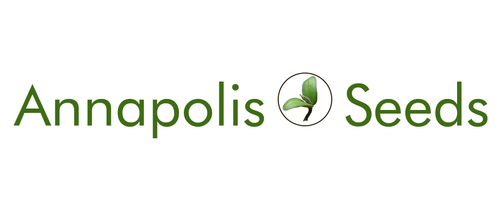Cucumbers (Cucumis sativa), Melons (Cucumis melo) and Watermelons (Citrullus lanatus) all require pretty similar growing conditions, they like it warm and fertile and sunny. It is possible to direct sow all three after the soil has warmed in late spring, but I find I always have better results from starting seeds indoors to give them a head start on the season. The seedlings are quick to grow, so don't start them too early. I find 4-5 weeks before planting is about right, which means a late April or early May start for an early/mid June transplanting. Plants are very sensitive to cold, so be careful for late frosts, some years we'll even hold off transplanting melons until around solstice time if early June is cool. Cucumbers seem a little bit hardier to cool temperatures than the more delicate melons.
Choose your sunniest, best amended site. They love fertile soil, but because the plants sprawl they can tolerate rough ground as long as the area around the roots is well tended. I've had great results growing them in well-composted hills in a newly plowed garden, I poured lots of love into the hills and the vines by mid summer covered over the dry sod clumps that made up most of that garden. The vines tend to sprawl between 6 to 10 feet, so not as prolific as squash vines but still needing some space. I tend to plant mine close together but with room to sprawl, about 18" between plants works well for me. All three species will climb up arbours or trellises, cukes especially, which is a great way to grow more intensively in a small space.


By late July or August you'll probably start seeing flowers, they come in either males or females (more about pollination under seed saving!). Flowers are followed shortly by fruits. Cucumbers can be eaten at any size, but are often best when fairly small. Much of the skill involved with growing Melons and Watermelon is in picking them at just the right time… I'm still getting the hang of it! Cantaloupe, Honeydew and other Melons are usually easier to tell, they're fragrant and separate easily from the stem when perfectly ripe. Watermelon can be tricky, my ripeness test involves tapping (ripe fruit sound deep and hollow while underripe ones sound more dense and higher pitched... generally!) and also checking the spot where the fruit touches the soil (underripe ones will usually be green, while ripe ones will have a white patch).
All three species are cross-pollinators, and are pollinated by bees. Latin names are the key here, cukes (Cucumis sativa) only cross with other cukes, melons (Cucumis melo) with melons, and watermelon (Citrullus lanatus) with other watermelon. So you could grow a row of cantaloupe (Cucumis melo) side by side with a row of cucumber (Cucumis sativa) without any unwanted crosses. Indeed at the farm that's just what we sometimes do! Isolation between different varieties of the same species is at least 1,000 feet, but you can potentially get away with less with barriers like forest or buildings in between varieties. We like to grow two varieties of each at our farm each season, isolated in our two separate fields. Our fields are separated by a ravine and woods with about 800 feet between, and we've never noticed a cross.
For seed saving, the more ripe the fruit the better. Cucumbers will turn soft and yellow when fully mature for seed, they're far past it for eating so not many people see them at that stage. Slice the fruit lengthwise and scoop out the seeds and jelly into a container. Cucumber seed actually benefits from fermenting. I break up the seeds and jelly unto small pieces, add just enough water to the bucket to cover, and let the whole mixture sit and ferment for 3-4 days. In that time the jelly coating around each seed rots away, and since the fertile seeds sink you can wash away the pulp with a few rinses of water. Spread your seeds on a tray to dry, and you're golden.


Melons and watermelons are a similar idea to cukes, except they don't require fermentation and the seeds are fully mature during the perfect eating stage. Which makes melon the most delicious of all seeds to save! For melons simply scoop the guts and separate out the seeds. Fertile seeds sink, so separating in water can make it easy. Watermelon are spread throughout the flesh, so saving seeds often involves eating a lot of watermelon. You can simply spit the seeds, or if you look closely the seeds tend to develop in veins, so it's also possible to cut out most of the seeds while still leaving lots of (now seedless) watermelon! Just rinse seeds clean and promptly dry them.
